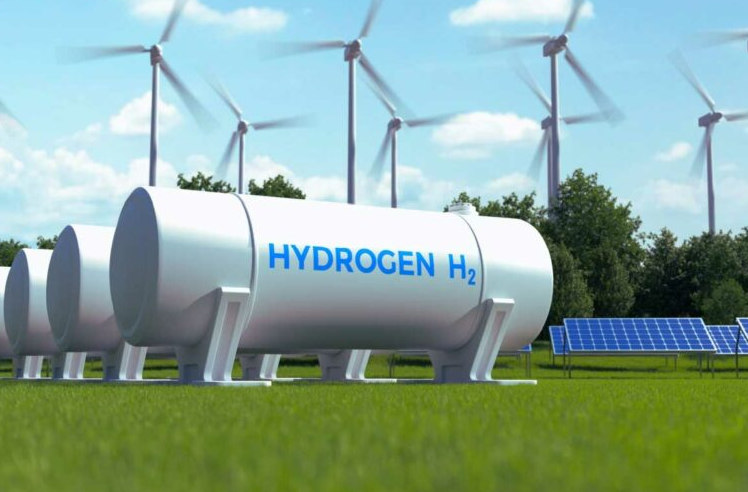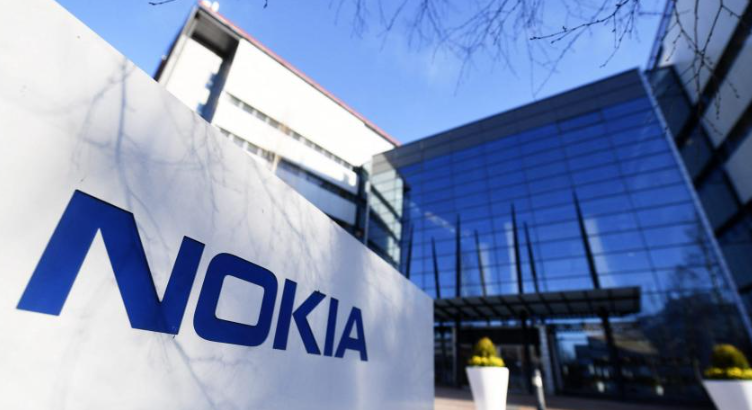
Date Issued – 12th September 2024
Bill Gates-backed startup says a global gold rush for buried hydrogen is picking up momentum
A Bill Gates-backed startup claims a global surge in interest for geologic hydrogen is rapidly gaining traction. Koloma, a U.S.-based clean energy startup, funded by Bill Gates and Jeff Bezos, is leveraging expertise traditionally used in the hydrocarbon industry to fuel what’s being called a “gold rush” for buried hydrogen. The rise in attention surrounding this underutilized resource, known as geologic hydrogen or “white hydrogen,” has sparked excitement for its potential in driving the shift away from fossil fuels. Koloma’s CEO Pete Johnson explains that geologic hydrogen represents a unique exploration and production opportunity, allowing the company to capitalize on the skills and infrastructure of the oil and gas sectors to quickly scale this carbon-free energy source. By adapting existing technologies and service providers, the startup aims to accelerate industry development.
Having raised over $305 million since its inception, Koloma has attracted a broad range of investors, including Khosla Ventures, Amazon’s Climate Pledge Fund, United Airlines, and Bill Gates’ Breakthrough Energy Ventures. Prominent backers like Ray Dalio, Richard Branson, and Jack Ma further underscore the market’s belief in this resource’s transformative potential. Dubbed a potential “gamechanger” by analysts at Rystad Energy, geologic hydrogen could revolutionize the energy transition by offering a low-carbon solution with minimal environmental footprint. Exploration is already underway in the U.S., Canada, Australia, and Europe, with hopes that untapped reserves can play a pivotal role in reducing reliance on fossil fuels. Johnson highlights the benefits of geologic hydrogen as a primary energy source, with a smaller carbon footprint, reduced land use, and lower water demands. Additionally, he points out that this resource could enable the U.S. to scale domestic ammonia production, positioning the country as a major exporter while reducing the carbon impact of fertilizers.
Despite the enthusiasm, challenges remain. While geologic hydrogen’s long-term potential is vast, some industry experts caution against overhyping its current capabilities, citing environmental concerns and logistical hurdles around extraction and distribution. However, Koloma is confident, with substantial financial backing and a strategic approach to navigating the sector’s complexities. According to Johnson, the company is well-positioned to tackle these roadblocks, with support from a diverse group of investors who are either focused on the technology, potential resource discovery, or low-carbon derivative products that could leverage geologic hydrogen’s advantages. Though hurdles remain, Koloma’s ambitious efforts and growing industry momentum could help unlock geologic hydrogen’s promise as a future cornerstone of clean energy.
Asset Managers Are Now Investing in Once-Shunned Nuclear Stocks
Asset managers are now turning their attention to nuclear energy stocks, a sector long avoided by investors with environmental mandates, betting that the once-shunned industry is poised for a comeback. Major firms such as Robeco Institutional Asset Management, J O Hambro Capital Management, and Janus Henderson Investors are reconsidering their stance on nuclear energy, recognizing its role in achieving global net-zero emissions targets. Chris Berkouwer, lead manager for Robeco’s Net Zero 2050 Climate Equities fund, remarked that while the firm had previously taken an exclusionary approach, it’s now clear that nuclear energy is “an indispensable part” of the transition away from fossil fuels. The inclusion of nuclear energy in environmentally-friendly portfolios is sparking debate. Critics highlight concerns about nuclear waste, uranium supply, and the risks posed by geopolitical events, such as Russia’s seizure of Ukraine’s Zaporizhzhia nuclear power plant. Proponents, however, argue that nuclear power is emissions-free and highly efficient, producing vast amounts of electricity with minimal fuel. In fact, nuclear power is the largest source of clean energy in countries like the U.S., France, and South Korea.
In the European Union, heavy lobbying by France helped include nuclear energy in the bloc’s green taxonomy in 2022. The growing demand for energy, especially to power the expanding AI-driven data centers, has also elevated nuclear’s importance. BlackRock Investment Institute sees nuclear energy as essential for supporting the AI revolution, with portfolio manager Alastair Bishop noting the profound implications for the power market as AI adoption skyrockets. Fund managers are also eyeing opportunities in uranium mining and nuclear technology companies. For example, J O Hambro has been investing in uranium miner Cameco Corp., whose stock has surged 80% since early 2022. Other companies in the nuclear space, such as Constellation Energy Corp., BWX Technologies Inc., and NuScale Power Corp., have seen significant stock gains as well, reflecting growing investor interest.
The International Energy Agency projects that global nuclear capacity must double by mid-century to meet net-zero targets, underscoring the sector’s critical role in the energy transition. However, the industry still faces cost challenges, as nuclear plants require massive capital investment and often take longer to build than renewable energy facilities. Nonetheless, small modular reactors (SMRs) are being touted as a cost-effective solution, with the potential to change public perception of nuclear energy. Despite the hurdles, asset managers are optimistic about nuclear’s potential. As Berkouwer notes, there are stringent checks in place for selecting nuclear investments, especially regarding safety and geopolitical risks. With increasing interest in uranium mining, SMRs, and advanced nuclear technologies, the sector is positioning itself as a key player in the future of clean energy.

Nokia and OTE Group set dual world-record optical transmission rates over ultra long distances
Nokia, in collaboration with OTE Group, part of Deutsche Telekom, has achieved two new world records in optical transmission rates using its sixth-generation Photonic Service Engine (PSE-6s) technology. The field trial, conducted over OTE Group’s national dense wavelength division multiplexing (DWDM) network, successfully transmitted 800Gbps on a single channel over 2,580 km and 900Gbps over 1,290 km marking a breakthrough for long-distance, high-capacity data transmission. These records were achieved using Nokia’s 1830 PSI-M optical transport solution and represent a significant leap in the performance of optical networks. Additionally, the trial demonstrated 1.2 Tbps transmission over a 255 km single channel, contributing to a total network capacity of 25.6 Tbps per fiber.
This advancement not only enhances network capacity and spectrum utilization but also reduces energy consumption by 40%, making it more sustainable by minimizing the network’s carbon footprint. Michalis Papamichail, OTE Group’s Core Network Devops and Technology Strategy Director, highlighted the company’s global leadership in long-haul DWDM networks and its commitment to achieving top-tier performance in a cost-effective manner. Nokia and OTE’s achievement aligns with growing demand for bandwidth driven by social media, cloud computing, and video streaming, further positioning Greece as a hub of advanced network infrastructure. James Watt, Senior VP of Nokia’s optical business, emphasized that these dual world records underscore Nokia’s leadership in high-capacity, long-haul transmission solutions, contributing to a global data infrastructure that is essential for future digital applications. This partnership between Nokia and OTE demonstrates their shared commitment to developing cutting-edge optical networks that can meet the increasing demands for data transmission in an ever-evolving digital landscape.
Nippon Steel, U.S. Steel make last-ditch effort to win US nod, source says
Nippon Steel and U.S. Steel are making a last-ditch effort to secure U.S. government approval for Nippon’s $14.9 billion bid to acquire U.S. Steel. According to sources, Takahiro Mori, a senior Nippon Steel executive, and U.S. Steel CEO David Burritt are meeting with key U.S. officials, including Treasury Deputy Secretary Wally Adeyemo and Commerce Deputy Secretary Don Graves, to address concerns raised by the Committee on Foreign Investment in the United States (CFIUS). The Treasury Department leads CFIUS, which is currently reviewing the deal on national security grounds. The meeting takes place in the context of political opposition from both Republican nominee Donald Trump and Democratic nominee Kamala Harris, as the companies seek to navigate scrutiny over the potential impact of the merger on the U.S. steel supply chain, especially with Pennsylvania, U.S. Steel’s headquarters, being a key swing state in the 2024 presidential election.
CFIUS has expressed concerns that the merger could weaken U.S. steel production, potentially threatening national security. However, business groups such as Japan’s Keidanren and U.S. counterparts argue that the review process may be influenced by political considerations, rather than objective security concerns. In a letter to Treasury Secretary Janet Yellen, they voiced fears that CFIUS might be misused for political gain, undermining the economic and strategic benefits of the deal. Nippon and U.S. Steel responded to CFIUS with a detailed counter-argument, asserting that the merger would boost U.S. steel production by injecting essential capital from an allied nation into a struggling domestic industry. Japanese government spokesperson Hideki Murai emphasized the importance of strengthening U.S.-Japan economic ties but refrained from commenting directly on the acquisition. Despite these efforts, the deal faces an uphill battle, as both political pressure and national security concerns continue to influence the outcome of the CFIUS review.
Durex makes India condom push for women, rural consumers
Durex, the globally recognized condom brand owned by Reckitt Benckiser, is shifting its strategy in India to target women and rural consumers as part of a growth initiative. Despite India’s status as the world’s most populous country, contraceptive use, particularly condoms, remains low, with only about 10% of men using them, and sterilization being the preferred method for women. However, attitudes are changing, and the use of condoms among women has nearly doubled in recent years, providing an opportunity for Durex. Reckitt is launching new marketing campaigns and reformulating products, such as lubricants, to appeal to women, especially addressing concerns that 30% of Indian women experience discomfort during sex. The company aims to increase condom use among women, which is currently underrepresented.
However, Reckitt faces challenges in distribution and pricing, particularly in rural areas, which are more price-sensitive. Durex’s main competitor, Manforce, has also adjusted its marketing to appeal to women, increasing competition. While the overall Indian condom market is currently valued at $210 million, it is projected to grow at a compound annual rate of 7.4% through 2030. In rural India, where stigma around purchasing condoms remains, pricing is a significant factor. Free government-provided condoms are often preferred over premium brands like Durex, which are priced higher. Reckitt plans to introduce smaller, more affordable packs to rural consumers to overcome this barrier. The company acknowledges the scale of the challenge but is optimistic about long-term growth, as it works to break down societal taboos and increase condom use across India.
Find below some of our Buy/Sell Recommendations. Balfour Capital Group is a distinguished global boutique investment management firm with $400 million AUM and over 1000 Clients.

Disclaimer: This post provides financial insights for informational purposes only. It does not constitute financial advice or recommendations for investment decisions.

